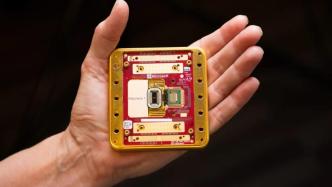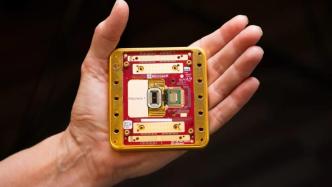
On February 20, Microsoft announced a new breakthrough in quantum computing and unveiled its first quantum computing chip, Majorana 1, saying that quantum computers are "only a few years, not decades away." Microsoft said that the development of Majorana 1 requires the creation of a completely new state of matter, the so-called "topological body."
Each transistor in a traditional computer can only be in two states, 0 or 1, but as a computing unit in a quantum computer, a quantum bit can exist in multiple states, which can accelerate certain types of computing applications. Errors are one of the biggest challenges in quantum computing. Because quantum bits tend to exchange information with their environment quickly, it makes it difficult to protect the information needed for calculations. Generally, the more quantum bits are used, the more errors there will be.
To solve this problem, Microsoft's quantum chip uses a new solution. Majorana 1 has been in development for nearly 20 years, and Microsoft is betting on an approach that few people have taken - combining traditional semiconductors and superconductors to build "topological quantum bits." Majorana 1 relies on a particle called Majorana fermion, which has properties that make it less prone to the errors that plague quantum computers, but is difficult for physicists to detect and control. Microsoft said they made Majorana 1 with indium arsenide and aluminum, using superconducting nanowires to observe the particles and can be controlled by standard computing equipment.
Majorana 1 has fewer qubits than its competitors. Microsoft said it has only built eight topological qubits, which are not yet capable of performing calculations that would change the nature of computing. Microsoft believes that far fewer qubits based on Majorana fermions are needed to build quantum computers because the error rate is lower.
Jason Zander, executive vice president of Microsoft's long-term strategic investments, said Majorana 1 is a "high risk, high reward" strategy. "The hardest part is solving the physics problem. There is no textbook for this. We have to discover it ourselves."
Philip Kim, a professor of physics at Harvard University, said Microsoft's new invention is significant because topological quantum bits can accelerate the development of quantum computers. "If all goes well, Microsoft's research could be revolutionary."
But Jason Alicea, a professor of theoretical physics at Caltech, questioned whether the company had actually built a topological qubit, saying that the operation of quantum systems is often difficult to prove. "In theory, topological qubits are possible, and people think it's a worthwhile goal," Alicea said. "You have to verify that a device operates in all the magical ways predicted by the theory, otherwise the reality of quantum computing may become less optimistic. Fortunately, Microsoft is ready to try."
When effective quantum computers will arrive has become a topic of debate among senior executives in the tech industry. Nvidia CEO Jensen Huang said last month that the technology is still 20 years away from surpassing Nvidia chips. Microsoft believes that a fundamental change in computing technology is much closer than people have recently believed, saying that quantum computers are "only a few years, not decades away." IBM said that large-scale quantum computers will be online in 2033. Google said that commercial quantum computing applications are only five years away.
Last December, Google announced that its latest quantum chip, Willow, performed amazingly in benchmark tests. Willow, which has 105 qubits, completed a standard benchmark calculation in less than 5 minutes, while today's fastest supercomputers take 10^25 years (that is, 10,000,000,000,000,000,000,000,000 years), a number far exceeding the age of the universe. Scientists study ways to reduce errors. At that time, Google found that the more qubits used in Willow, the more errors can be reduced exponentially, which solves the key challenges in the field of quantum error correction.
